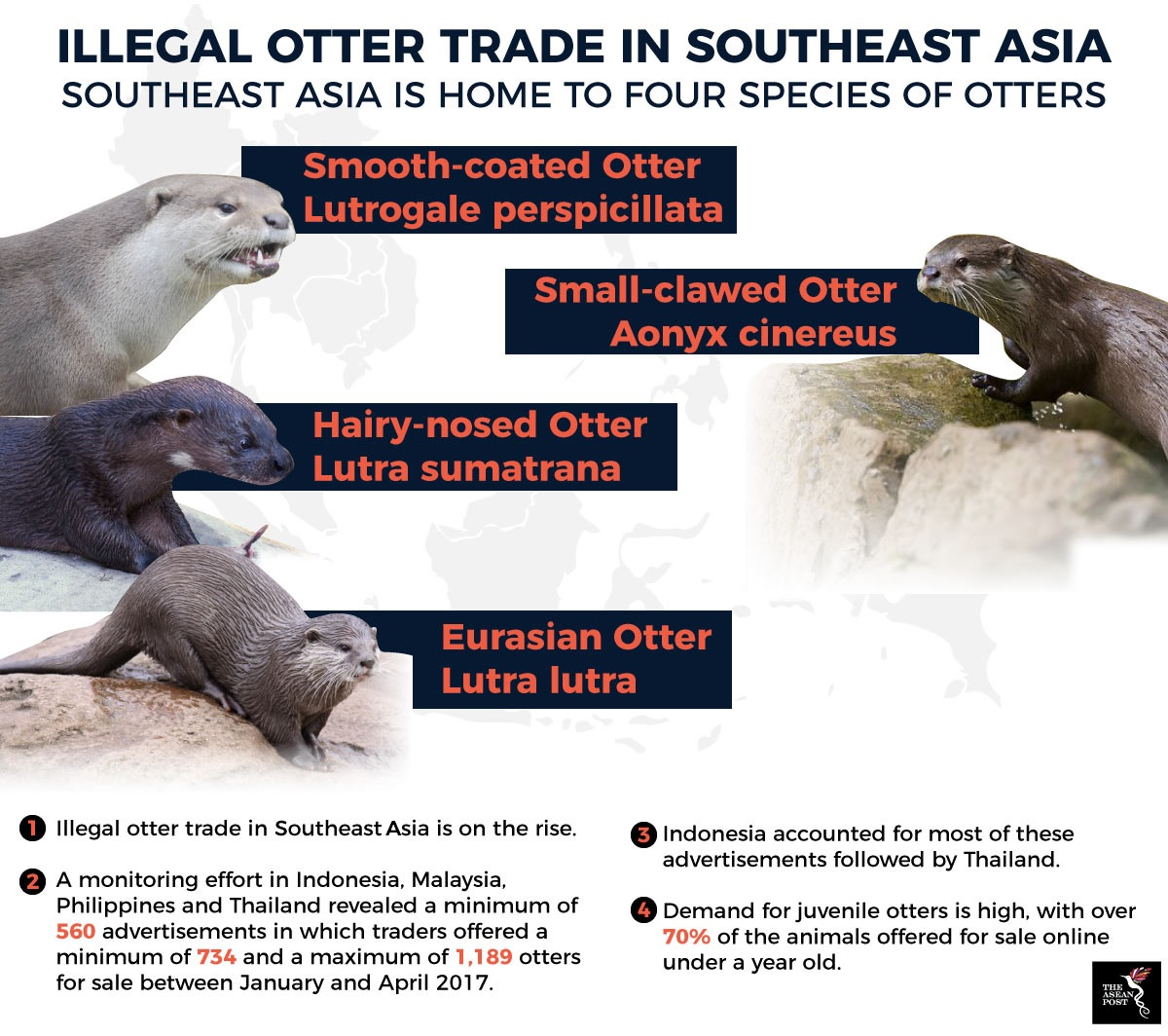One of Southeast Asia’s main treasures is its beautiful flora and fauna. Gifted with lush forests and beautiful waters, the region is blessed with diverse wildlife. However, bit by bit, some of these natural wonders are being chipped away by the rapid modernisation that’s taken over the region. This, compounded by several other reasons have had an adverse effect on animals of different species such as the Malayan tiger and tapirs. While the plight of tigers and tapirs is well documented there are other creatures that are being overlooked.
It’s easy to ignore the struggles of the otter as information on this animal is sparse. Often only seen on television or in zoos, some people may not even know that there are otters in Southeast Asia. The reality is, the number of otters in the region is slowly decreasing.
Home to four different species of otters, the region is seeing otter populations decline. Among the reasons for the decreasing number of otters in the region is the increasing loss of suitable habitat, the impact of pesticides on their wetland biomes and human-otter conflicts caused by perceived or actual threats to local and commercial fisheries.
Illegal otter trade
A major – but often undocumented – threat to otters is the illegal trade in them. The business of otter trading often involves poaching of otters to meet the demand for the pet industry. It has also been reported that otter furs are high in demand and can fetch a hefty price. There is also demand for otter parts for use as ingredients in traditional medicine.

Source: TRAFFIC
According to TRAFFIC, a wildlife trade monitoring network, the online pet trade is one of the main drivers of the illegal trade in otters. TRAFFIC conducted a monitoring effort of only one-hour per week in Indonesia, Malaysia, the Philippines and Thailand and recorded 560 advertisements in which traders offered a minimum of 734 and a maximum of 1,189 otters for sale between January and April 2017. These figures were published in their report titled, “The Illegal Otter Trade in Southeast Asia” which was released yesterday. The report revealed that Indonesia accounted for most of these online sales with an average of 711 of all otters observed for sale, followed by Thailand with 204.
Protection
TRAFFIC has identified the region’s lax regulations for animal trafficking as one of the reasons for the thriving otter business.
“The fact that so many otters can be so easily acquired and offered for sale to thousands at the click of a button and subjected to little or no regulation, is a serious problem,” said Kanitha Krishnasamy Acting Regional Director for TRAFFIC in Southeast Asia.
In Southeast Asia, the laws already protect otters from being poached or caught. However, these laws are usually weak and loopholes are easily found. Enforcement is not strong as well. For example, Indonesia has regulations in place to control the trade of unprotected species by setting annual harvest quotas. However, there are no provisions in the law there regarding penalties or fines against those found in violation of these quotas.
Aside from that, TRAFFIC pointed out that legislation of a law that regulates online wildlife trading is imperative. At the moment, many Southeast Asian countries are still behind in this regard. TRAFFIC has urged Indonesia and Thailand in particular to look into this as both countries have the most active illegal otter trades in the region.
ASEAN as a whole could also play an important role. The wildlife trade often transcends borders hence regional cooperation is necessary if governments are serious in combatting this crime.
In the past, the region has been guilty of taking its beautiful environment for granted. The measure of a developed nation isn’t just in the number of skyscrapers and trains it has but also how it preserves its environment. As Mahatma Gandhi once said, “the greatness of a nation can be judged by the way its animals are treated.”
